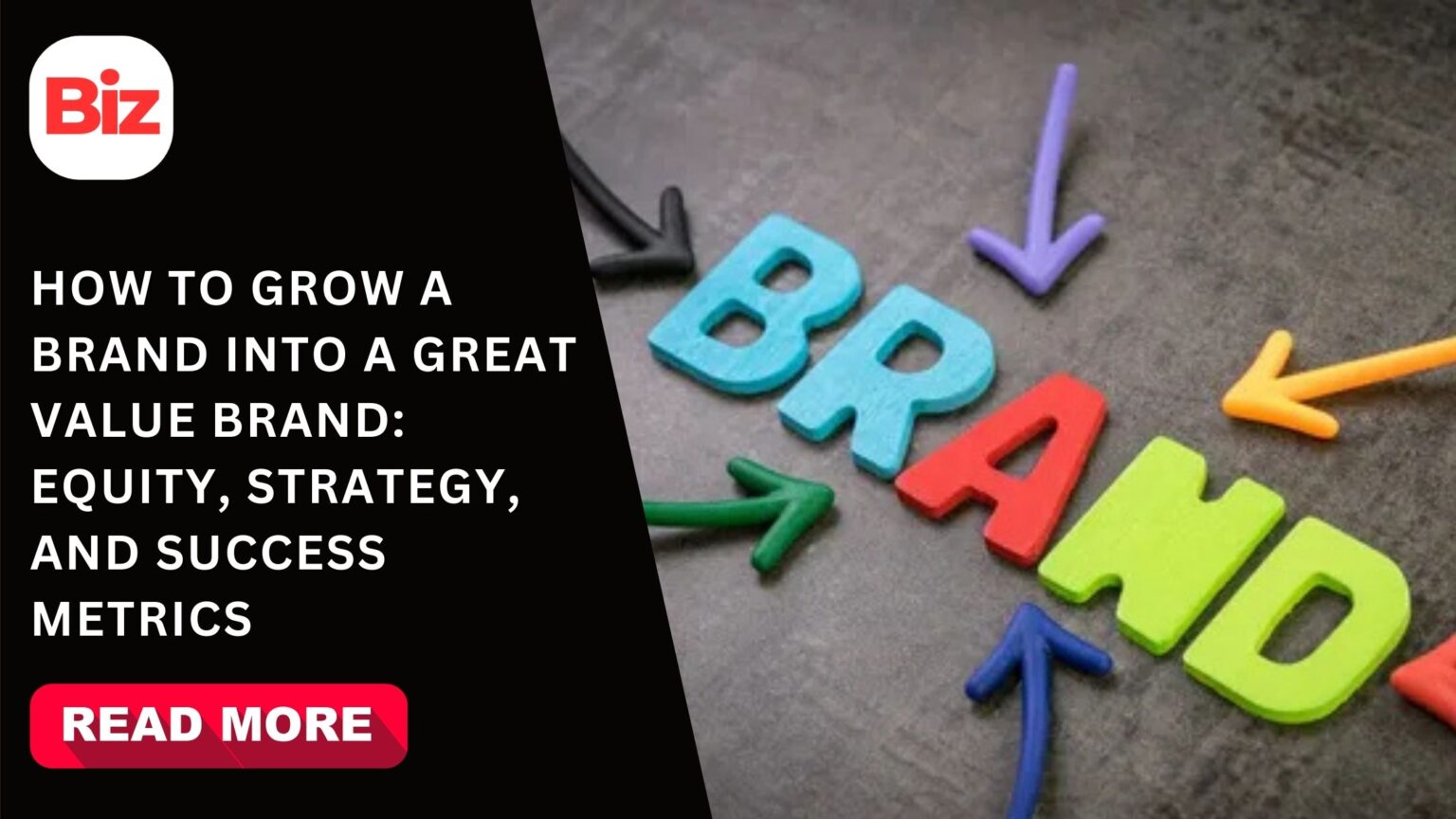Brand building is one of the most important steps in starting a business. Even a great product or idea has little impact if you can’t communicate it effectively to your target audience. The business of brand goes beyond logos and colors—it’s about creating a clear identity that reflects your mission, personality, and brand values. A strong brand identity can turn a startup into a Great Value brand that makes good connections with customers. Knowing what brand equity is and how to grow a brand helps you build loyal relationships, stay ahead of competitors, and achieve success.
In this article, learn how to build your own brand from scratch and create a compelling and Good brand identity that resonates with your target audience.
What is a brand?
A brand defines a business, product, service, person, or concept in the market. It differentiates your business from others in the same industry and has a set of rules (called brand guidelines) that dictate how that business will be marketed and presented. Branding is the process of establishing a brand—how it looks, what it sounds like, and the defined target audience it hopes to reach.
What Is Brand Equity?
Brand equity encompasses consumers’ individual and collective levels of brand awareness and knowledge.
Brand awareness refers to consumers’ level of recall, salience, and familiarity with your brand. It’s just one step in the brand equity-building process.
Brand knowledge refers to consumers’ thoughts, feelings, attitudes, and relationships regarding your brand. Your brand can communicate a great deal of meaning through its identity (logo and packaging) and narrative.
Consumers receive, interpret, personalize, and remember those
brand associations, personalities, and images.
Why Is Brand Equity Important?
Brand equity is critical in the business of brand because it influences both consumer behavior and business performance.
When your brand has positive equity, customers are more likely to:
- Pay a premium price for your product
- Stay loyal and make repeat purchases
- Try new products under your brand name
- Recommend the brand to others
Positive vs. Negative Brand Equity
Positive brand equity means customers see your brand as trustworthy and valuable. They are willing to pay more and associate your product with higher quality. For instance:
- Nike = Performance & motivation
- Apple = Innovation & premium experience
- Lego = Creativity & quality play
Negative brand equity happens when your brand’s reputation suffers. Customers may avoid your products due to:
- Product recalls or defects
- Poor customer service
- Scandals or cultural insensitivity
- Price increases without added value
- Environmental harm or unethical practices
The difference between positive and negative brand equity can make or break your business brand.
How to Grow a Brand: A 5-Step Process to Build Brand Equity
Growing a brand and building equity is not about overnight success—it’s about consistency, clarity. Here’s a proven five-step process to build a Great Value brand:
1. Invest in Marketing
Every touchpoint with your customers shapes your brand equity. Marketing plays a key role in telling your story, shaping perceptions, and driving awareness. Effective investments include:
- Digital marketing (SEO, social media, paid ads)
- Influencer collaborations
- Sponsorships and partnerships
- Branded content (blogs, podcasts, videos)
- In-store branding and customer experiences
2. Educate Your Consumer
Customers don’t just buy products—they buy meanings. Use your brand story to educate them about your mission, values, and uniqueness. This creates emotional connections and strengthens brand values.
For example, a plain T-shirt at Walmart and one from Prada serve the same function, but consumers pay more for Prada because of its brand equity. The brand itself creates added value.
3. Encourage Customer Behavior and Advocacy
Strong brands don’t just sell; they engage customers as advocates. Encourage user-generated content, reviews, and testimonials. When people publicly associate with your brand, they help build trust and authenticity.
Word of mouth, influencer mentions, and social proof create a snowball effect that strengthens the business of brand.
4. Build Firm-Based Equity
Once your brand has traction, equity creates financial stability. Customers pay higher prices, sales volume grows, and your company gains negotiating power with distributors and suppliers. This stage allows your brand to scale more effectively and efficiently.
5. Increase Shareholder Value
A strong brand reduces market volatility and increases shareholder confidence. When customers keep choosing your brand, revenue becomes more predictable, reducing risk and increasing long-term stability.
How to Measure Brand Equity
If building equity is about meaning, then measuring it is about proof. Here are three key methods to measure brand equity:
1. Brand Awareness
How well does your target market know your brand? You can measure this with:
- Consumer surveys
- Focus groups
- Website search volume
- Social media mentions
2. Brand Relevance
Brand relevance is about whether customers feel your brand offers something special or different. When people believe your brand has unique value, it strengthens brand equity and increases their preference for your products over others.
You can measure brand relevance through:
- Customer satisfaction surveys
- Net Promoter Scores (NPS)
- Conjoint analysis (to see how customers make trade-offs)
3. Brand Power
How strong is your brand preference after repeated exposure? Surveys and brand preference tests can show if consumers consistently choose your brand over others.
These metrics provide insight into the health of your brand and its growth potential.
Final Words
Brand business is not logos, ads, or campaigns—it’s building lasting, intimate relationships with customers. Brand equity is the invisible force that fuels customer loyalty, premium price, and long-term achievement.
To build a Great Value brand, concentrate on:
- Establishing and embodying your brand values
- Spending on intelligent marketing strategies
- Teaching and interacting with your customers
- Monitoring and adapting based on feedback
When your brand brings meaning and value consistently, it shifts from mere product to a potent cultural icon—one that consumers trust, love, and proudly endorse.








